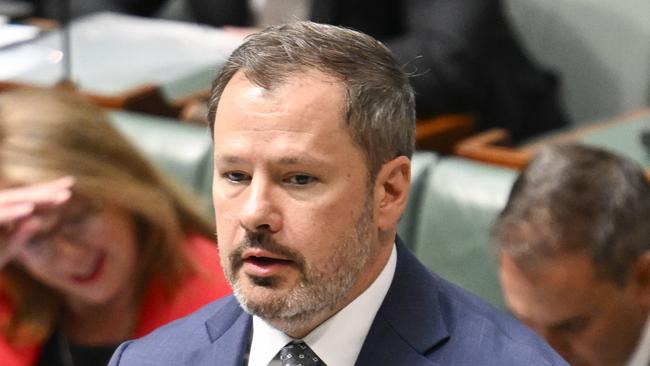Big business urged to lift game on R&D
Industry and Science Minister Ed Husic says Australia’s economy is too reliant on a ‘narrow set of industries’.

Industry and Science Minister Ed Husic says Australia’s economy is too reliant on “good fortune” and a “narrow set of industries”, as the Albanese government paves the way for a post-election overhaul of research and development incentives to encourage big business to invest more in technological innovation.
Mr Husic will use a speech at the National Press Club on Wednesday to warn that Australia’s productivity is stagnating because of a lack of R&D investment, as a panel led by Tesla chairwoman Robyn Denholm releases a report accusing big business of being a key laggard.
“There’s a growing reliance on small and medium enterprises to drive R&D which contrasts with other advanced economies where it’s dominated by large companies,” Mr Husic will say, according to an extract of his speech.
“Workers at companies which invest strongly in R&D are almost twice as productive as workers at companies that don’t invest in innovation.
“And our ability to adopt new technologies like AI quickly relies on having an innovative workforce.”
Late last year, Mr Husic tasked Ms Denholm to lead a review into Australia’s R&D framework, along with former chief scientist Ian Chubb, former Australian of the year Fiona Wood and LaunchVic chief executive Kate Cornick.
The panel will report its recommendations to the government by the end of the year, however a discussion paper released on Wednesday declared bolstering R&D would “prevent Australia’s slide into mediocrity”.
“R&D should be prioritised as a national asset and its application weaved into key industry and innovation policies,” the discussion paper says
The report says creating new products through R&D is essential to Australia delivering on AUKUS, meeting the energy transition and catering for the ageing population.
“There is a need for innovation to reduce emissions in many industries, particularly in non-energy emission-intensive business and industrial processes,” it says.
“Hard to abate sectors like steel, aviation and agriculture need new R&D to become cost competitive.”
Australian investment in R&D has declined from 2.24 per cent of gross domestic product in 2008-09 to 1.66 per cent in 2021-22.
This is below the OECD average of 2.73 per cent and has been led by declines in business investment, the report says.
Government expenditure in R&D had also declined from 0.41 per cent of GDP in 1993 to 0.16 per cent in 2022.
“To reach the OECD standard of 2.73 per cent of GDP, an extra $25.4bn a year of R&D investment across sectors would be needed,” the report says.
SMEs have been carrying the load of business investment in R&D, which is different from overseas where investment is led by big business.
“Relying only on SME efforts is unlikely to achieve the scale of investment growth needed to compete with global industry, especially in deep research,” the report says.
“In Australia, large businesses have decreased R&D expenditure.
“The contribution of large businesses to Australia’s R&D system needs to lift. Large businesses can be central pillars in innovation ecosystems.”
In January, the Business Council of Australia called on the Albanese government to immediately raise the cap on R&D incentives from $150m to at least $250m “so private companies, not government, can invest more in Australia”.
On Wednesday, Mr Husic will declare the expert panel’s discussion paper makes for “sobering reading”.
“The panel says there’s an over-reliance on our good fortune, leaving us unprepared to achieve sustained economic growth,” he will say.
“They describe our economy as one of the least differentiated in the world, and an R&D system that’s siloed and barely engaged with the national need.
“At the national level there is little planning to maximise the value of our scientific output and minimise the inadequacies in the system.”
Ms Denholm said it was “crucial that we put innovation at the centre of our national goals”.
“My objective through this examination is to unlock the immense potential of Australian research by turning it into tangible outcomes that deliver economic and societal benefits and enhance our global competitiveness,” she said.




To join the conversation, please log in. Don't have an account? Register
Join the conversation, you are commenting as Logout